Taking Action
An Artist Becomes an Advocate
There is a shortage of global organizations working to secure the rights and safety of performers at risk, especially theatre artists, whose needs are often harder to meet in cities of refuge as they require other artists with whom to collaborate. Despite the excellent work of FreeMuse, PEN, ICORN, freeDimensional, and the Arts Rights Justice EU working group, we need more involvement from the general public and from artists in the free world. Some of the major issues we are dealing with in the field of artist rights and safety include reaching artists in peril, assisting artists to escape home country threats, coordinating placement and host options, supporting threatened artists (including legal, medical, educational, and artistic support), and spreading awareness to arts communities and beyond. This series will highlight the work that is being done around artist rights and safety in the theatre world, in the hopes that we can ignite dialogue, spark further exploration, and encourage more people to get involved in this growing field.—Jessica Litwak, series curator
Yet if we are bold,
love strikes away the chains of fear
from our souls.
—Maya Angelou
There is no doubt that making a commitment to assist artists at risk is tough. It is challenging enough to read about the plight of persecuted populations in the papers or watch news of oppression on television. The narratives and images yank at our hearts, cause our stomachs and throats to knot up. Sometimes the images haunt us for days. Eventually, though, we change the channel, toss the paper out, and get on with our lives. But when working closely with people in danger, people whose lives are affected by violence and tyranny to the extent that they can no longer live, work, create, or love freely and safely, it’s a whole different matter.
When you sit with an artist who has lost his house, family, or career; when you are working with an actress who can longer leave her home to attend rehearsals because she’s afraid for her life; when you become part of the team that pledges to do something about a person’s safety, it is not easy to toss the information in the recycling bin or change the channel. You lose sleep as the red tape of rescue seems endlessly tangled. Time is short, people are in danger, and you feel you cannot rest until they are safe. But this is how I see it: if artists are out there suffering the threat of imprisonment, torture, homelessness, and death, the least I can do is suffer through my anxiety and put up with the insomnia in an attempt to support them through difficult and sometimes life-threatening circumstances.
In my role as the artistic director of the H.E.A.T. Collective, I spend most of my time teaching about socially engaged theatre work, as well as writing, performing, and directing plays about issues of peace and justice, and devoting artistic energy to what I call “art of service,” which describes the theatrical workshops, productions, and events that serve communities by facilitating creative personal and social change. I also work to spread the word about the growing field of artist rights and safety, and to assist in specific casework whenever and wherever I can. It’s not virtue or courage that drives me. It’s love.
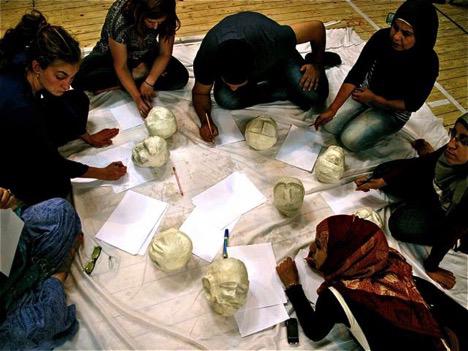
I first felt it when I met “Y,” a single mother and actress in a Middle Eastern city where it was not safe for her to be. She didn’t realize how much danger she was in for a long time. She said, “In my country death threats are a form of flirting.” But when a bomb shook her building, she knew her life was at risk. By really listening to her story and taking small actions to assist her, I became involved the outskirts of her life and began to care deeply about her wellbeing.
Next, I met “H,” a fearless journalist from Southeast Asia who was the first woman to report on certain conditions of terror and war in her country and around the globe. Despite her petite stature, she had stared down dictators and terrorists, asked the hard questions. She was drugged on an airline and transported to a foreign land and held in prison. She is now safely in the United States, but she suffers from depression and PTSD.
Then there was “K,” a performance artist from an African nation who was imprisoned and tortured for his art, and who now works to overcome his trauma by bringing projects back to his country to help the people heal.
I worked with “N,” the mother of a playwright in Iran. Her son had been censored and his freedom and safety were at risk. She was writing to me from prison where she was being held for treason as a result of her own creative writing. We could not assist her son and I felt helpless.
I think of these people often. I think of “G,” the student who whispered to me at the end of my teaching tour in Basra: “Get me out of Iraq.” I think of the children I built puppets with in the refugee camp in Greece, who were so happy to be out of the rickety ship that brought them from Syria. They were warm and dry, fed and safe. As the head of the camp drove me to the boat to go back to the mainland, she told me that the government had just denied them refuge and although they didn’t know it yet, they were all going to be shipped back to Syria within the next week. I think of all my Palestinian colleagues who can’t get through checkpoints, the artists who can’t show up for performances, retreats, conferences. Is it a visa issue? Are they being held somewhere? Or…?
If artists are out there suffering the threat of imprisonment, torture, homelessness, and death, the least I can do is suffer through my anxiety and put up with the insomnia in an attempt to support them.
In the early days of my career as a theatre artist, I did not often step out of my theatre work to support a movement unless it was a one-day protest or presidential campaign. I didn’t want to take time away from making my art. Yet I was continuously disillusioned with the industry and yearned for more meaningful experiences. My first exploration into a creative life beyond theatre came in the form of drama therapy training. I returned to graduate school in 2010 to become certified, and I was heartened by the people in the field who identified themselves not by their professional accomplishments but by the demographics they served. That same year, I became deeply involved with Theatre Without Borders (TWB) and Acting Together on the World Stage, where I learned valuable lessons about using theatre as a vehicle for change.
Through my work at TWB, I became involved with freeDimensional (fD), which offers “distress services” to artists under threat—creating safe havens, connecting them with community resources, and providing them with access to funds. I worked on a collaboration between the two organizations, creating an intake form for artists at risk in both English and Spanish. We would get requests for safe haven assistance or for legal, medical, financial, or artistic help, and we had to assess the urgency of the situation. Did we need to extract someone immediately from danger, or could we find support for them in their own country? I no longer work with fD as funding cuts motivated the end of casework on that platform, but the work is ongoing through Artist Safety Net and other organizations.
If danger is imminent, caseworkers have to move fast. But sometimes, being in a hurry means a well-meaning support person can miss certain things. For example, when we got “T” out of Afghanistan and safely to India, we didn’t realize how difficult it was going to be for her. After a few weeks she disappeared. It turned out that she only spoke Persian, and she was lonely and without work. As an actor, she needed people to create with. One day she had just picked up and gone back to Kabul, choosing danger over isolation.
We also always have to decide whether it is harmful or helpful to turn to social media and the press. Publicity can help or hurt depending on the situation, and the individual artist must be consulted, and plans adjusted, on an individual basis. When a Ukrainian artist, “F,” was violently arrested and imprisoned, we let the world know and posted picture after picture of his face and a request to free him. But when we took the same actions in Uganda, the activists there asked us to stand down. We heard that allies in the West who picked up their cause only worsened and complicated things, and that it was better to support them person-to-person and not on the public stage.
I started to receive opportunities to work in the field, and the firsthand experiences taught me more about cultural competency. I spent a long time working in the Czech Republic on the FEAR Project, a theatre piece based on interviews about fear with a mission to develop compassion, empathy, and understanding for audiences and artists alike. The play and the events that occur pre and post production encourage all participants and witnesses to become curious about the paradoxes that divide human beings across culture, gender, age, and ethnicity. The process allowed us all to learn surprising information about each other and our audiences and grow beyond assumptions and stereotypes.

When I first went to Iraq, in 2012, as the only Western judge for a theatre festival of plays from across the Arab world at Basra University, I was horrified by the holes in the walls from our Western bombs. After a couple of weeks, I blurted to a group of Iraqis: “I am sorry for what my country did to your country.” A well-known actress from Baghdad replied, “But Jessica. You are not a bomb.” I hadn’t realized the enormous complexity of post-war trauma and the capacity for resilience, especially in art making.
Inspired by my travels, I enrolled in a PhD program in Leadership and Change, and I began my doctoral work on theatre as a vehicle for change. I continued my work as a core member of TWB, collaborated with Marie Le Sourd at On the Move to create a global mobility guide and symposium, and worked with Arts Rights Justice EU. I learned more about strategies for artist safety and global collaboration across artistic disciplines and personalities. Through Deborah Brown at Association for Progressive Communications, I met Karel Novotny in the Czech Republic. Very knowledgeable about digital security, Novotny told me about a European system of communication for artists at risk that uses text messages that can go undetected from predatory sources. The secret system of text transmission is also a weapon against censorship—and a means of informing audiences about underground performances.
The challenges to artistic freedom in the East and Global South are widespread and far more extreme than anything artists experience in the West.
Censorship is everywhere. In Egypt, when I presented at a conference on theatre and censorship, I was surprised at first that the people in the Middle East were interested in hearing from artists in the West on the subject of censorship. The challenges to artistic freedom in the East and the Global South are widespread and far more extreme than anything artists experience in the West. As Westerners, we need to be aware of our artistic liberties. However, I came to see how we are affected by censorship in insidious ways even here in the United States.
A colleague of mine in Singapore recently asked me, “How long does it take the government to give you official permission to produce a play after you’ve applied for approval?” She could hardly believe that in the United States theatre artists have the freedom to produce whatever theatrical content they want. But then she was equally shocked by the lack of national funding for the arts. Preparing for a panel I was moderating for PEN called “Theater and Creativity in the Underground” (the underground being the environment that performers at risk who cannot create freely in their home countries must inhabit), Natalia Kaliada of London’s Belarus Free Theatre told us that once she was safely in England, free of the censorship in a Belarus, she ran into other forms of suppression including self-censorship, especially in her searches for funding. She said in some cases she felt freer underground.
I know much more now about visas, funding for threatened artists, and how to access resources in the network of care than I did at the beginning. However, my biggest asset to the field is artistic and psychosocial. I can provide creative solutions through theatre practice, tools for creative leadership, and guidance or counseling for artists experiencing trauma or post traumatic stress in the role of a drama therapist. I would like to see more artists involved in the field, aiding threatened artistic creators by supplying information and or resources as well as helping to raise awareness about the plight of artists at risk. Throughout the world. One artist assisting another artist is a powerful deed. Creative action or generous outreach between artists can not only affect outcomes enormously these actions and efforts have the potential to bring global unity to the forefront of artistic experience everywhere.
There is a great need for further action. In 2014, I was invited to take part in a full-day roundtable convened at the Institute of International Education (IIE) funded by the Andrew W. Mellon Foundation. The event resulted in a report that identified gaps in resources and eventually led to the creation of the Artist Protection Fund. Some of the suggestions for future growth in the field included creating a consortium in support of threatened artists, opening a multi-program and multi-donor clearinghouse, sharing information, mapping needs, and identifying further gaps in resources. Then there’s the idea of creating a new fellowship program for threatened artists, building a more coordinated network of protection, funding smaller existing organizations so they can achieve their full potential, and creating regional community-based artist safety networks.
The goal of this series is to widen and enrich the dialogue around what is happening, suggest resources for further exploration, and encourage theatre practitioners to take part in this growing field. You will hear from an expert arts, rights, and justice consultant; an immigration attorney; the director of Artists at Risk Connection at PEN America; and an artist who devotes his life to art of service in conflict zones. My hope is that these accounts will provide you with a better sense of the global reality of artists at risk and perhaps inspire action.
Through the H.E.A.T. Collective’s collaboration with organizations such as TWB and Arts Rights Justice EU, and in relationship with practitioners like the ones you will meet in this series, I continue to take small steps towards the strengthening of artist rights. I will always make an effort to support the work of those with their feet in the trenches and jump in as needed. I still dream of an international network of courageous artist volunteers working the hotlines and fortifying the web of resources to bring peace, justice, health, and safety to all who need it.
Is this dream possible?
If so, how will I help to achieve it?
How will you?

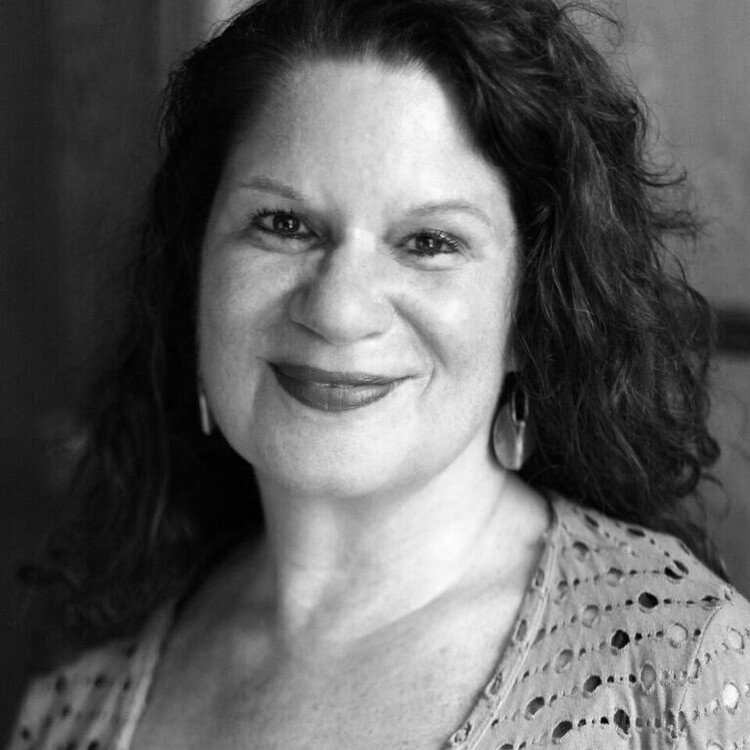
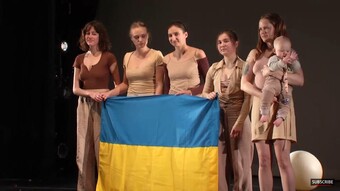

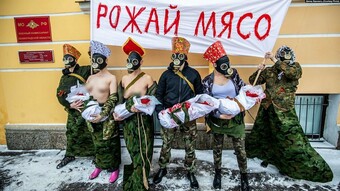

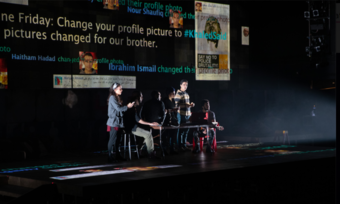

Comments
The article is just the start of the conversation—we want to know what you think about this subject, too! HowlRound is a space for knowledge-sharing, and we welcome spirited, thoughtful, and on-topic dialogue. Find our full comments policy here
Wonderful article. Thanks for sharing this and for curating the whole series!
Thanks for reading and responding and for all the work you do for artists!
This series begins today - it has been a joy to curate and enter very interesting discussions with dear colleagues whose work will be published over the next five days. Looking forward to hearing your thoughts HowlRound community.
I've so enjoyed reading through this series Jessica!